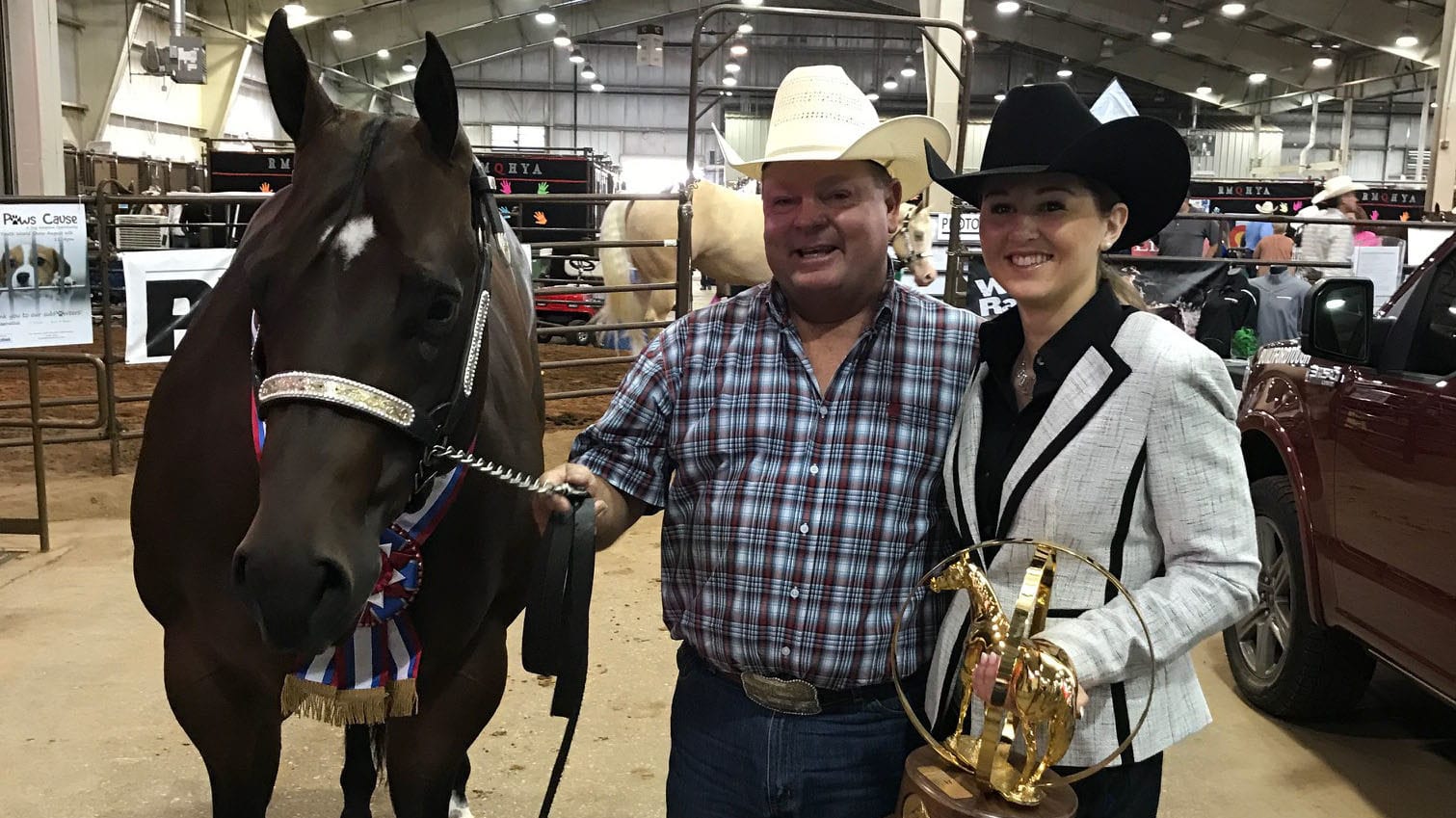The most significant misconception people have about halter is that bigger is supposed to be better. That’s not the way it’s supposed to be, and especially not in the performance halter. It’s form to function.
What I tell people in the performance halter is to fit your horse for his frame. I don’t think you need to try to make a small-framed horse look like a big halter horse. And I don’t think you need to make a heavier muscled horse look like a hunt seat horse. The best thing you can do it take advantage of the good parts of your horse and try to work around his faults.
It’s a conformation class, and that’s what the judges are going by. It’s not how much muscle, how big or whatever; it’s correctness, balance, and conformation.
Unlike showmanship, in halter, you can show from one side. But you have to make sure you get your horse set up good, even if it takes a little longer. You want to keep his head and ears up. You’re showing your horse more than you are yourself.
Tracking
When you track your horse, the biggest thing is to keep your horse straight and at a consistent speed at the walk and the jog. You can track a sound horse and make him look sore if you’re pulling his head into you and he’s shortening on one side because you’re pulling him around.
CLICK HERE to read more tips from Multiple Halter World Champion Buddy Laney.







